Widely lauded as a historic accord on climate change, the Paris Agreement aims to mitigate global warming, by bringing about a reduction in GHG emissions, among other goals. But what would the adoption of the agreement mean for the industry and the region? How would it shape government regulations and business decisions? We bring you responses and reactions from regional and international industry leaders and members of organisations.

– By Fatima de la Cerna and Rajiv Pillai
In the months leading to the 21st session of the Conference of the Parties (COP 21) to the United Nations Framework Convention on Climate Change (UNFCCC), there was much speculation about its outcome, specifically on whether it would result in a consensus on how the world could go about tackling the problem of global warming.
The answer came on December 12, 2015, nearly two weeks after the climate talks commenced on November 30, in Paris, France. Close to 200 countries reached a decision to adopt what is now referred to as the Paris Agreement, and what has been hailed by the President of France, François Hollande, as “a major leap for mankind”. Echoing President Hollande’s sentiment, UK Prime Minister David Cameron called it “a huge step forward in helping to secure the future of our planet”, while United States President Barack Obama described it as “the best chance we have to save the one planet that we’ve got”.1
Making history
“Historic”, “unprecedented” and “long-awaited” are but some of the terms that have been used in media reports and statements released by world leaders with reference to COP 21, because for the first time since the UN climate talks started in 1992 in Rio, the conference ended with the Parties reaching a universal agreement on climate change.
So what exactly does the agreement, which is scheduled to undergo ratification on April 22 in New York City, stipulate? What do the Parties hope to accomplish through the accord?
As laid out in Article 2.1 in the final draft of the Paris Agreement, the accord “aims to strengthen the global response to the threat of climate change, in the context of sustainable development and efforts to eradicate poverty”.2 The section goes on to identify different ways the goal can be achieved, with the first being – and it is what experts claim is the highlight of the agreement – to hold “the increase in the global average temperature to well below 2 degrees C above pre-industrial levels and to pursue efforts to limit the temperature increase to 1.5 degrees C above pre-industrial levels”.2
The trickle-down effect
Prior to the conference in Paris, Parties were asked to submit their Intended Nationally Determined Contributions (INDCs), indicating what actions or measures they planned to take as part of the adoption of a new climate agreement. Those pledges, if the Paris deal is ratified and enshrined in international law, will, in simple terms, determine how the COP 21 agreement will impact each participating Party. However, with the emphasis placed strongly on the need to cut down greenhouse gas emissions and the adoption of clean energy, expectations are high that industries and governments the world over will feel the effects of COP 21 in the form of new regulations and standards, particularly in terms of energy efficiency and refrigerant use.
Keeping this in mind, Climate Control Middle East approached experts and stakeholders and asked them to share their thoughts on the deal that came out of the Paris talks, specifically on the possible impact it would have on the region and the HVACR industry. We bring you their responses.
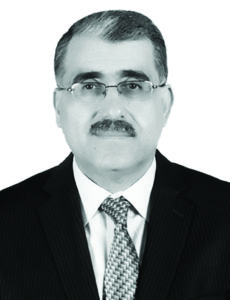
Hassan Sultan, Former President, ASHRAE Qatar Oryx Chapter and Director of Mechanical Department, MZ & Partners
What does the Paris Agreement mean for the GCC region, in your opinion?
“The Paris Agreement means a lot to the countries in the GCC region, since they have positioned themselves for progress, and each country has an inspiring sense of willingness to embrace change to secure its future. The Agreement is also important for the region because of the issue of fossil fuels, which form the backbone of the Gulf economies. The GCC region accounts for less than 2.4% of global greenhouse gas emissions. However, global climate change will have severe negative environmental impact on the region, which, in turn, will have implications for economic and other developmental gains achieved by the region.”
Hassan Sultan, Former President, ASHRAE Qatar Oryx Chapter and Director of Mechanical Department, MZ & Partners

Scott Coombes, Director, AESG
“I think COP 21 will have a significant impact on the built-environment, because buildings are one of the worst contributors to global warming and of greenhouse gases. So the outcome will likely be that government departments will enforce regulations – essentially top-down regulations – to reduce greenhouse gases and carbon emissions from buildings, and that directly relates to equipment. We saw at the VRF Conference (21-22 March) the promotion and encouragement of the use of equipment with improved efficiency, and which bridges the gap between chillers and the standard DX unit. That’s a gap that fits in very nicely with regulation requirements for smaller buildings and also medium-sized buildings, where DX systems are typically specified. It now opens up the opportunity for more efficient units to be used, which directly reflects and relates to the objectives and the outcome of COP 21.”
Scott Coombes, Director, AESG

Sougata Nandi, Founder and CEO, 3e Advisory
“Given the fact that GCC countries have the highest per capita ecological footprint in the world, and also, GCC [region’s] coastlines will go under water when sea level rises, the GCC [region] needs to look beyond COP 21. Dubai has already declared its aim to provide 75% of the emirate’s energy through clean energy sources by 2050. While this is laudable and much needed, the entire GCC [region] needs to come up with such aggressive initiatives, as Dubai alone cannot mitigate emissions that are already out of control.”
Sougata Nandi, Founder and CEO, 3e Advisory

Jordon Baker, Regional Manager, Greenheck
“I’ve heard various construction professionals refer to the GCC [region] as ‘a product jumping ground’ for product that does not meet the energy efficiency requirements of other, more regulated nations. With increasing energy efficiency requirements in other countries, legislation in line with COP 21 goals are required to ensure products not allowed in other areas, such as North America and Europe are not sold off in the GCC [region] at lower cost, often being called a ‘value proposition’ for the project. This practice pushes out the high-efficiency products and technology that will advance the GCC countries. True value proposition is refining a system for more effective operation and lower operating costs, which may come at slightly higher procurement cost but often has fast payback period.”
Jordon Baker, Regional Manager, Greenheck
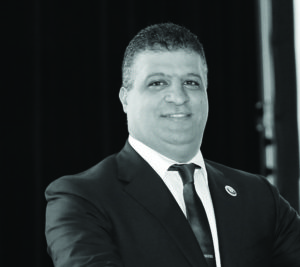
Charles Constantin, Managing Director, GEZE Middle East
“The landmark agreement in Paris (COP 21) is an invitation to become more environmentally conscious and think ecologically for a sustainable economy. The use of green refrigerants in HVAC and the reference to Ventilation Engineering, including energy efficiency, will become more valuable in the region.”
Charles Constantin, Managing Director, GEZE Middle East

Saad Ali, VP and Group General Manager, Ruskin Titus Gulf
“This gathering means people will attempt to cut greenhouse gas emissions to a level that will limit the global average temperature but, most importantly, push certain institutions/governmental bodies to act and push codes to new/existing buildings. Although we may not see immediate changes, I see the UAE leading and embracing those changes as always.”
Saad Ali, VP and Group General Manager, Ruskin Titus Gulf
“Over the years, there’s been slow progress. A lot of great efforts have gone into the conversation on climate change, but there’s also been significant disagreement. This time, with COP 21, because countries were allowed to make commitments that are suitable to their own nations, talks progressed. The next step is to demonstrate actual, quantifiable improvements in the years to come. And when I talk about making COP real, it’s because when you deal with global leadership, to get a plan moving and for it to have actual meaning at a local or regional level in design and construction, you have to really set out to have a framework of how you’re going to do that. You can’t just go, ‘Oh, great. There’s now an agreement, and we all know what to do’. It’s not like that at all.

Holley Chant, Executive Director – Corporate Sustainability, KEO Consultants
“I think what’s very positive right now is that, because there’s this bigger movement, there’s a lot of reinforcement and encouragement from the public and private sectors for consultants, technology providers and clients to make true, meaningful and quantifiable commitments instead of merely saying, ‘Sure, yes, I’ll go green’. It would be good to hear, ‘My company has embedded in our business plan our commitment to making reductions of 30% over our baseline, and we will use a third-party assessor to demonstrate progress on those commitments’. It’s very specific and real, and will create change.”
Holley Chant, Executive Director – Corporate Sustainability, KEO Consultants
“The conclusions of COP 21 can be perceived as reassurance for GCC countries to continue and reinforce the strategy of economic and energy diversification that they have engaged in recent years. We at Chemours expect that COP 21 will accelerate the investigation and adoption of more environmentally sustainable refrigeration and air conditioning technologies.”
Murli Sukhwani, EMEA Business & Market Manager, Chemours International Operations

Aamir Riaz, Corporate Director of Maintenance, Dur Hospitality
“The Paris Agreement is the first to commit all countries to cut carbon emissions, and it is partly legally binding and partly voluntary. Some aspects of the agreement, such as submitting emissions reduction targets and the regular review of that goal, are legally binding. However, the targets set by nations will not be binding. The pact will help to keep sustainable development on the right track and realise Sustainable Development Goal (SDG) no. 13: ‘Take urgent action to combat climate change and its impacts.’
“It sends a powerful signal that the world is fully committed to a low-carbon future and that the transition to a low-carbon economy is now unstoppable. In other words, it sends strong signals to investors and energy markets, which is likely to trigger a fundamental shift in investment from coal, oil and gas as primary energy sources, toward low-carbon energy sources like wind and solar.”
Aamir Riaz, Corporate Director of Maintenance, Dur Hospitality
How do you see the Paris Agreement affecting the HVACR industry?
“A paradigm shift in the mindset of HVAC manufacturers is anticipated because of the Paris Agreement, and many other Green initiatives that are active in raising awareness about the negative impact and the dangers of global warming and greenhouse gas emissions. ASHRAE, COP, the UN and others are on the right track to achieve a carbon-balanced world. We are optimistic that all stakeholders will take full responsibility of providing project design, project requirement and equipment manufacturing and selection that are in line with the COP 21 Agreement. May the force of COP 21 be with all of us, as we attempt to reduce carbon emissions and, thus, limit the onslaught of global warming and reduce air pollution.”
Hassan Sultan, Former President, ASHRAE Qatar Oryx Chapter and Director of Mechanical Department, MZ & Partners

Hans Reinders, CEO, Oxycom
“It’s going to have an impact. It’s been delayed, because industries tend to wait longer so they can keep on thriving on their current products, but the outcome of Paris has made the government here more aware of the task at hand. Governments will implement maximum uses of energy per square metre, if you want to call it that way. Dr Esam Elsarrag of GORD (Gulf Organisation for Research & Development) said that, in the future, to be able to build a building here, you would have to cope with very strict standards of energy use and IAQ, and if you can’t, you won’t be in business anymore. It’s as simple as that. So the government is formulating stricter rules for energy consumption, and the industry will follow. It has to follow.”
Hans Reinders, CEO, Oxycom
“COP 21 has each country taking initiatives to reduce energy consumption. Multiple approaches have already been taken, with the most basic being labelling programmes. So we have standardisation and regulatory bodies that control minimum efficiency levels.
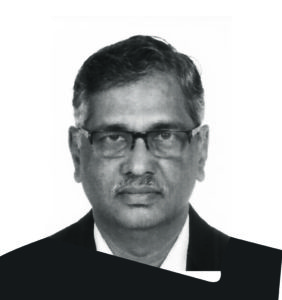
Jitendra Bhambure, Executive Vice President – R&D and Technology, Blue Star
“From an R&D perspective, new technologies will have to offer energy savings. It is especially important in the HVAC industry, because about 60% of the energy a building consumes goes to air conditioning. So that becomes an important factor to be considered.
“There are going to be challenges. How do you make the systems work in high-ambient environments? How do we train the technicians who will handle complex systems? Will there be a change of business model, in terms of after-sales service and unit maintenance? Many things will emerge. But we’re sure that we’re all working for the common goal of saving the environment.”
Jitendra Bhambure, Executive Vice President – R&D and Technology, Blue Star
Do you see the agreement influencing equipment buying decisions?

Asim Hashmi, Sales Director – Applied, SKM Air Conditioning
“Definitely. People are still doing a lot of R&D on new refrigerants, because certain refrigerants we are using, especially for chillers, don’t meet carbon-footprint requirements. In the future, refrigerants are going to be a major deciding factor when it comes to equipment [selection].”
Asim Hashmi, Sales Director – Applied, SKM Air Conditioning

Zhongbo Cao, Sales Director, Ningbo AUX Electric Co. (Royal Cool)
“It will have an impact, because based on the agreement, governments, administrations and ministries will give more attention to new refrigerants and CO2 emissions, and then they will launch new regulations, which will affect end-users, as well as project owners and contractors.”
Zhongbo Cao, Sales Director, Ningbo AUX Electric Co. (Royal Cool)
“The main component of the Paris Agreement are the INDCs that define the goals of each country’s climate change programme and outline the mitigation measures they plan to undertake to meet those goals. Out of the nearly 200 INDCs submitted, fewer than 60 mention HFCs and fewer than 15 indicate specific plans regarding HFCs. Several of them identify plans related to refrigerants. Many countries are, however, hoping to contribute to the reduction of high-GWP HFCs through the framework of the Montreal Protocol (MP), which was developed to reduce the production and use of ozone-depleting substances like CFCs. There has been growing support for the MP framework to be used to control the production and use of high-GWP HFCs, which have replaced CFCs in many applications. The Parties of the Montreal Protocol made a formal decision in 2015 “to work within the Montreal Protocol to an HFC amendment in 2016”, which would ultimately result in the phase-down of high-GWP products globally.”
Murli Sukhwani, EMEA Business & Market Manager, Chemours International Operations
What does the Paris Agreement mean to you or your company?

Klára Skačanová, Deputy Manager – Market Development, shecco
“The Paris agreement reached at COP 21 shows that the much-needed political will to address climate change at a global level is there. It creates an impetus for the HVAC&R industry to find viable long-term alternatives to high-GWP hydrofluorocarbons (HFCs). Avoiding the use of HFCs – consumption of which is currently increasing steeply – could avert 0.5 degrees C of warming by 2100. Natural refrigerants that have zero or negligible impact on the climate are available across different sectors, and can readily replace HFCs in growing number of applications. Companies worldwide have commercialised technologies using CO2, ammonia, hydrocarbons, water and air as refrigerants, instead of synthetic HFCs, with continued efforts to invest in this direction. To cite the example of commercial refrigeration, at least 6,800 supermarkets worldwide are currently using CO2 transcritical technology – a number that is expected to grow rapidly in the next few years.”
Klára Skačanová, Deputy Manager – Market Development, shecco
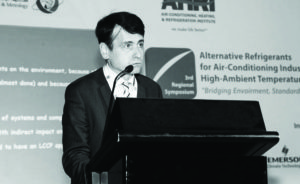
Didier Coulomb, Director General of the International Institute of Refrigeration (IIR)
“The agreement is important for the world, especially for all the refrigeration sector, including air conditioning. For that reason, I participated in the whole conference as Director General of an intergovernmental organisation, and had the opportunity to deliver a short statement during the high-level segment of the Conference (see “The statement”). First, because we will have to reduce the energy consumption of the equipment everywhere in the world, even if the way to do it will differ in the various countries. We will also need to use more renewable energies (solar energy, etc.) for the refrigeration sector.
“Second, because it will oblige us to reduce the fluorinated gases emissions. We already had discussions on the reduction of the production and consumption of hydrofluorocarbons (HFCs) since 2009 on the framework of the Montreal Protocol. We progressed a lot in 2015. However, negotiations did not really start. Now a worldwide agreement on the need to reduce greenhouse gases emissions is a clear green light to really start to negotiate, and we hope to obtain results in 2016.”
Didier Coulomb, Director General of the International Institute of Refrigeration (IIR)

Barbara Harvey, Spokesperson, Environment and Climate Change Canada
“Canada, alongside the countries of the world has reached an ambitious and balanced agreement to fight climate change. It was adopted by 195 countries, who will set targets, report on them in a transparent manner, and review and improve them very five years. Collectively, the countries of the world agreed to strengthen the global response to limit global average temperature rise to well below two degrees C, as well as pursue efforts to limit increase to 1.5 degrees C. We need to do this to avoid the harshest impact of climate change on our geography, livelihoods and health.
“We are confident that the successful outcome of COP 21 will pave the way for productive negotiations under the Montreal Protocol in 2016 to phase-down hydrofluorocarbons (HFCs). The Montreal Protocol offers the most effective framework and mechanisms to effectively address HFCs on a global scale. A phase-down of HFCs is important to meeting the ambitious objective of the COP 21 agreement.”
Barbara Harvey, Spokesperson, Environment and Climate Change Canada

Avipsa Mahapatra, Manager, Global Climate Campaign, Environmental Investigation Agency, Washington DC
“The agreement in Paris is a good foundation to start and strengthen global climate efforts. Although it is not a panacea, it definitely sketches the path forward towards a safer future. In November 2015, the Parties to the Montreal Protocol agreed to work together in 2016 to an agreement to phase-down potent refrigerants, such as HFCs. The success in Paris to reach compromises and come to an agreement augurs well for that process in Montreal Protocol, in my opinion. An HFC phase-down at the Montreal Protocol would complement the landmark Paris agreement, by providing climate mitigation of up to 100 billion tonnes of carbon dioxide by 2050, and avoid up to 0.5 degrees C of warming by 2100.”
Avipsa Mahapatra, Manager, Global Climate Campaign, Environmental Investigation Agency, Washington DC
“A lot of people argue that COP 21 was too little, too late. Too late? Maybe. But too little? I don’t know what’s too little. See, here’s the thing: There’s not enough we can do. The problem of climate change has, in my opinion, reached a point where it’s not reversible anymore. But with the COP 21 agreement, many countries have committed themselves to complying with certain standards, and that would mean changes in how we do business. Business as usual has to change, and it will change.

Sam Gouda, President and Lead Expert, Creara International
“We also have to change our way of thinking, because we are not going to be able to solve the issue of global warming with the same mentality we had when we created it. And make no mistake – we can’t blame this problem on anything else. We created it. So yes, COP 21 will definitely change things. It will encourage the upgrade of equipment to more energy-efficient products. It will create healthy competition amongst suppliers, in terms of innovation and of developing products with lower lifecycle cost and easy installation requirements. It will change the market for the better. All over the world, standard labelling programmes have been introduced, and they impose stringent limits. Products – even small ones like home appliances – that fail to comply with energy-efficiency standards are going out of the window. They’re no longer lucrative, and are going down the food chain. Consumers and businesses are much more educated, and energy has become an important part of the agenda.”
Sam Gouda, President and Lead Expert, Creara International
Why is there a lack of consensus regarding the use of refrigerants among manufacturers?
“As far as natural refrigerants are concerned, there is a broad consensus among a growing number of industry players working with the technology, as to their technical viability for refrigeration, heating and cooling applications. As for manufacturers of fluorinated refrigerants, they have a commercial interest in safeguarding their market share and position in the industry, from which the current lack of consensus on refrigerant use arises. Nevertheless, with multiple generations of fluorinated refrigerants having been introduced to the market since the Montreal Protocol was signed, natural refrigerants are seen as a solution that can end this circle of disagreement.”
Klára Skačanová, Deputy Manager – Market Development, shecco
“Refrigeration equipment and refrigerants manufacturers have different interests: Their technologies are different, and will be developed differently according to the various national or international regulations, which are or will be adopted. Their competition is not only a competition among manufacturers, but it is also a competition among various kinds of national policies and regulations. This international competition is very clear when you participate in the various debates in United Nations conferences.”
Didier Coulomb, Director General of the International Institute of Refrigeration (IIR)
“Depending on the equipment, the sector and the ambient conditions, manufacturers might find different refrigerants to be most suitable for their costs and markets.
“The availability of choice is a great thing. Just like in renewable energy, where wind might be a better option than solar for some regions, refrigerant A might be preferred over refrigerant B for a specific purpose by a particular manufacturer. Of course, there are some manufacturers who are comfortable in business-as-usual, and resist putting in resources where short-term benefits are harder to see.”
Avipsa Mahapatra, Manager, Global Climate Campaign, Environmental Investigation Agency, Washington DC
Do you foresee a paradigm shift in the mindset and actions of major corporations post COP 21?
“We see a growing number of companies recognising the potential of natural refrigerants as opposed to fluorinated gases in refrigeration and air conditioning equipment across the world. A growing number of equipment manufacturers are recognising the business potential, while end-users see natural refrigerants as a future-proof solution that is energy efficient, cost effective and safe. There is definitely a global shift taking place in different parts of the world, driven by legislative changes (for example, the EU’s F-Gas Regulation), the energy-efficiency gains that can be achieved and voluntary commitments from end-users.”
Klára Skačanová, Deputy Manager – Market Development, shecco
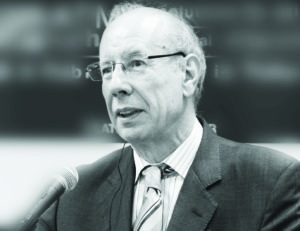
Sidi Menad Si Ahmed, Chief International Advisor, shecco
“The long-awaited forthcoming amendment on HFCs can no longer consider any replacement with GWPs, even the low-GWP ones, since the declared long-term ambition is to decarbonate our planet. Natural refrigerants can be used in many sectors and applications. So let us do it.”
Sidi Menad Si Ahmed, Chief International Advisor, shecco
“Not really in the refrigeration sector. If you compare this sector with other ones, it is clearly a sector that already made real environmental efforts for almost 30 years, thanks to the Montreal Protocol. The sector is thus much more mature than others. However, challenges are really important, especially in developing countries, and companies and countries need information and support. “The IIR’s (International Institute of Refrigeration) role is to disseminate scientific and technical information. The permanently selected and updated information we offer is necessary for all our members, in order to face these challenges.”
Didier Coulomb, Director General of the International Institute of Refrigeration (IIR)
“Canada was very encouraged to see businesses, entrepreneurs and investors actively participate in the COP 21 discussions, along with members of the Canadian delegation, Premiers from provinces and territories, mayors from across the country, aboriginal leaders, young people, environmental NGOs and labour force. Their message was loud and clear: Climate change is a priority, and they want to help and offer their creativity and their solutions.
“The Government of Canada is planning significant new investments in green infrastructure and clean technologies. Not only will these strategic investments help tackle climate change, but they will also give businesses opportunities to be part of the solution.
“Economic growth and environmental responsibility must go hand-in-hand. World economies are shifting towards cleaner, more sustainable growth, and it is essential that Canada be competitive on the world stage. Moving towards a more sustainable economy can offer tremendous opportunities for businesses.”
Barbara Harvey, Spokesperson, Environment and Climate Change Canada
“I would at best be speculating to comment generally on the mindset of the diversity of corporations out there. But what I can say with certainty is that any smart corporation should have already seen the writing on the wall: If your products or processes are bad for the climate, it is bad business. Companies must now recognise that it is in their own interest to cut their carbon pollution. Climate-friendly technology choices, including in refrigeration and cooling, are the only future-proof solution.”
Avipsa Mahapatra, Manager, Global Climate Campaign, Environmental Investigation Agency, Washington DC
[div class=”row”]
[div class=”col-md-10 col-md-offset-1 content-sidebox” style=”background-color: #0c5a12; color: #FFFFFF; “]
Refrigeration (including air conditioning) is indispensable to life. It will continue to grow steadily in the future, with a strong growth expected in developing countries. However, refrigeration accounts for about 17% of global electricity use, and some refrigerants (most CFCs, HCFCs, HFCs) are potent greenhouse gases if released into the atmosphere.
Coordination with the Montreal Protocol must be implemented as soon as possible, in order to engage a phase-down of HFCs having a high global warming potential.
The energy efficiency of alternatives to current HCFCs and HFCs is crucial. It is already satisfactory in many applications, and this should soon be the case in other applications, thanks to technological developments in progress.
Safety may hamper the uptake of these alternative solutions, as they may present new risks. Standards and regulations must be adapted to the current technical knowledge: This is a major issue, both at the international and national levels.
Objective, practical and up-to-date science-based information on technologies already available or in developmental stage, concerning their possible uses, their pros and cons, is indispensable. The International Institute of Refrigeration (IIR) can provide it to you. Join us. Thank You!
[end-div]
[end-div]
References:
Copyright © 2006-2025 - CPI Industry. All rights reserved.